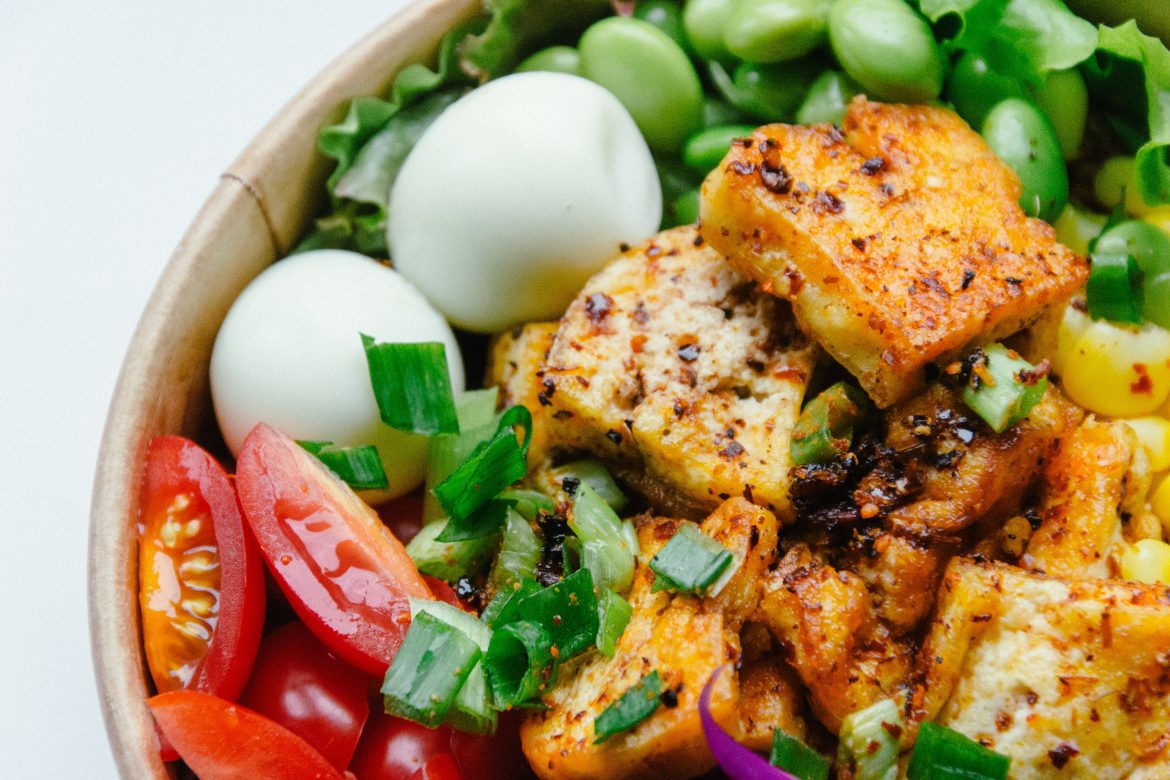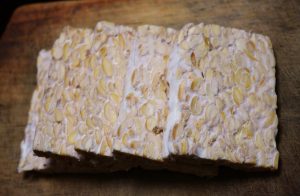Knowing what is tofu and what is tempeh can help you be in the know when it comes to leading food trends. It can be especially helpful if you’re in the market for meat substitutes. After all, tofu and tempeh are both great meat substitutes for your protein acquisition. Whether you’re on a meat-free diet or not, you will find that tofu and tempeh are delicious and can be great additions to your daily dietary regime.
Read on to find out more about these soybean-based meat alternatives.
What is Tofu Made Of?
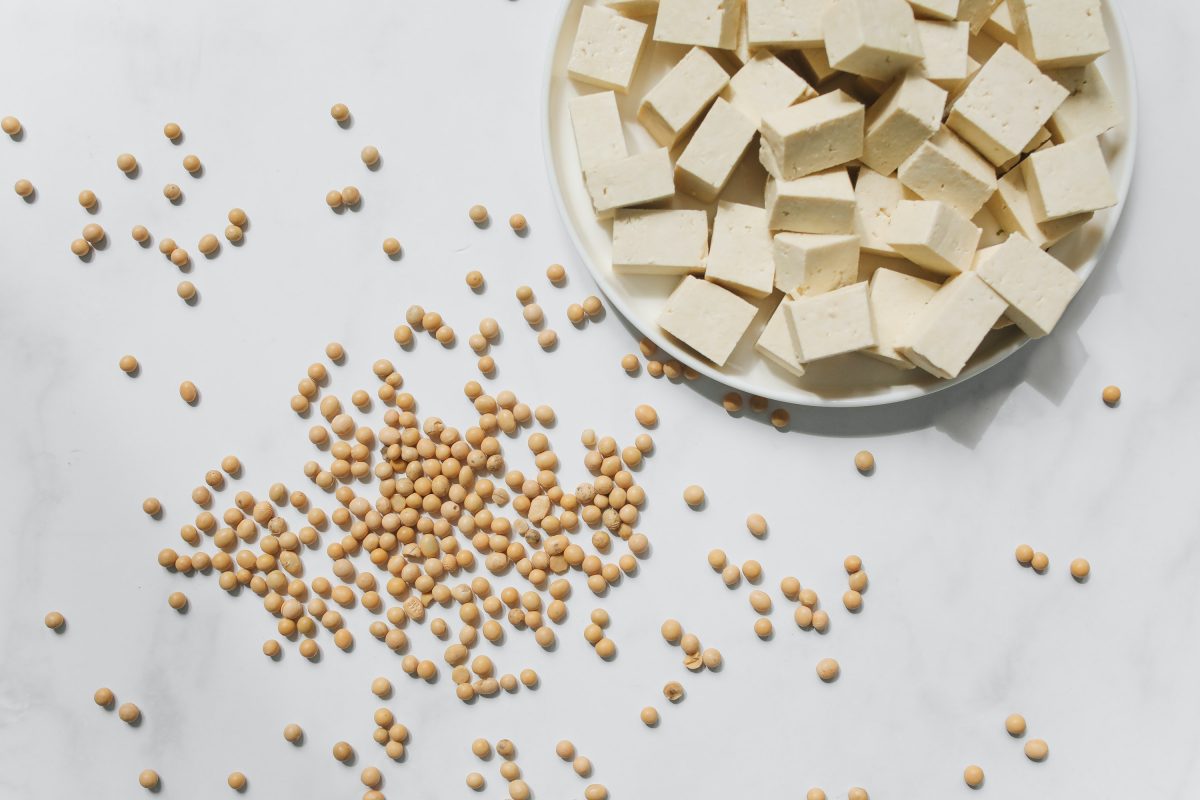

People recognize tofu as a food ingredient that originated in China. For many years, it served as a popular ingredient in many Chinese dishes. Eventually, people across the world enjoyed tofu as it reached other countries. Moreover, some people refer to tofu as bean curd. This name is derived from tofu’s main ingredient, the soybean.
How to Make Tofu?
So how is tofu made? First off, soy milk is made when soybeans are crushed in water while boiled. Then, the soy milk is processed to change from a liquid to a solid or semi-solid state. While coagulating, it is usually mixed with salt or calcium. Then, the curds that are produced will be pressed into solid blocks that we know as tofu.
What Does Tofu Taste Like?
Tofu almost has no flavor at all. Like most soy-based products, it tastes bland and is added to dishes for its flavor-absorbent quality. This soy product has a wide range of textures that depend on how they are made. You can find various types, such as soft, firm, and silken tofu in the market. After purchasing, you can serve these in different ways to fit your personal preference.
What is Tempeh Made Of?
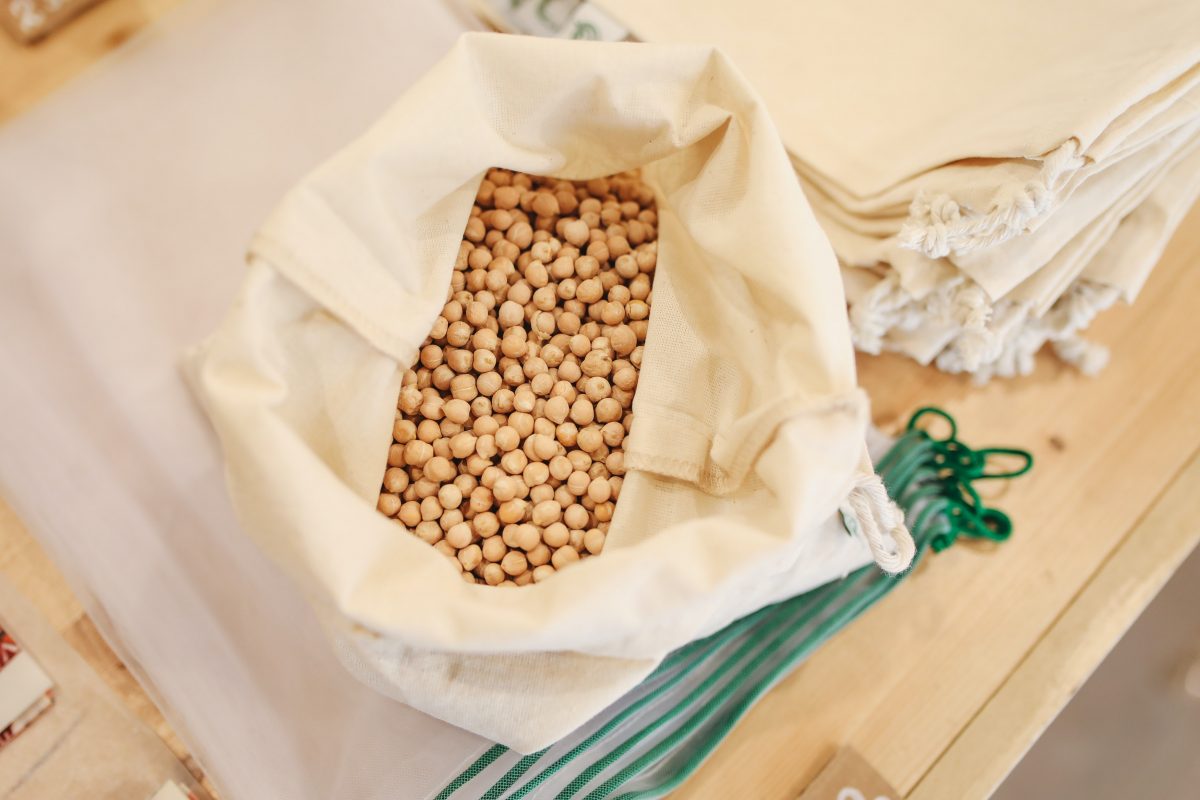

Like tofu, tempeh is also made of soybeans. This product is believed to have originated from Java, Indonesia. People reckon that tempeh was not intentionally made. Upon molding as they were transported, soybeans were recognized to be congestible and delicious. Since then, tempeh is made through the process of fermentation. This is done by storing the soybeans in warm areas to grow white mold. Eventually, the mold will coagulate the soybeans. Then, this will compact into a cake-like product that we know as tempeh.
What Does Tempeh Taste Like?


You might be wondering what tempeh tastes like, especially if you’re thinking of adding it to your plant-based meal plan. Most people assume that tempeh has a meat-like flavor. Though tempeh does have a texture that significantly resembles that of meat, the two vary greatly in flavor. Compared to tofu, tempeh has a stronger flavor and nuttier taste. It is also firmer and chewier compared to tofu’s soft and silken texture.
Where to Buy Tempeh?
Like tofu, there is an abundant stock of tempeh in various stores. You can usually buy tempeh in grocery stores, natural food shops, and healthy food markets near you. Keep in mind that tempeh has been fermented, so they have to be refrigerated.
Seitan as Another Meat Alternative
What is Seitan?


Seitan is another popular food substitute for meat. Like tofu, this meat alternative is believed to have originated from China. It is said that seitan used to be served to Buddhists who are encouraged to refrain from consuming animal meat. Seitan eventually made its way to the West and has been a popular food ingredient since.
What is Seitan Made of?


In contrast to tofu and tempeh, seitan’s main ingredient is wheat. This is how its other name, wheat meat, was derived. Seitan is made by the process of repeatedly washing wheat dough to take out its starch content. The product of this is a sticky and viscous lump. This mass can then be shaped to mimic all sorts of food.
Tempeh Vs Tofu: Nutrition Facts
Although both soy-based products are great meat alternatives, there is still a difference between tempeh and tofu. Slight variances in terms of their nutritional values can be observed. Keep these facts in mind if you intend to include these products in your daily diet plan.
Tofu Nutrition Facts


In a 100 g tofu serving, you can get:
- 94 kcal
- 5 g fat
- 0.5 g saturated fat
- 2 g carbohydrates
- 9 g protein
- 176 mg calcium
- 147 mg magnesium
- 12 mg sodium
- 2 mg iron
Compared to tempeh, tofu has a lower protein content. Calories in tofu are also relatively lower than that of tempeh. One of the better qualities of tofu is that it has rich potassium and iron content. Furthermore, calcium amounts are higher in tofu than tempeh, making it a better option for people with calcium deficiency.
Tempeh Nutrition Facts
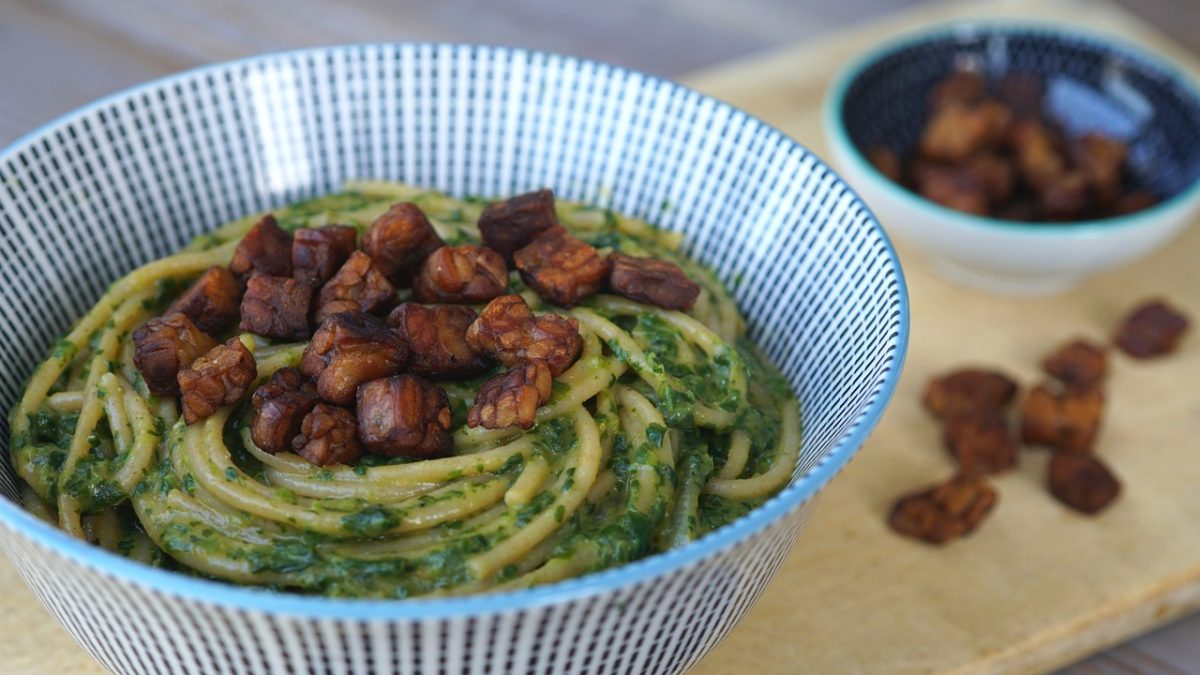

In a 100 g tempeh serving, you can get:
- 195 kcal
- 11 g fat
- 3 g saturated fat
- 8 g carbohydrates
- 20 g protein
- 96 mg of calcium
- 77 mg magnesium
- 14 mg sodium
- 2 mg iron
Carbs in tofu are significantly lower than the carbs in tempeh. However, protein levels are richer in a 100 g serving of tempeh as compared to tofu. The former also possesses more calories than tofu, making it a better source of energy.
Tempeh vs Tofu: Health Benefits
Tempeh and tofu are favored due to their low — and almost nonexistent — cholesterol and sodium levels. These make them healthier alternatives to animal meat. Not only do they have good texture and flavor-absorbent qualities, these soy products are also favored for their multiple health benefits.
Is Tofu Good for You?
Tofu is known to be bland to the tongue but filling to the stomach. This soy product is also good for you in many ways, making it a healthy food choice. Here are some of the health benefits that this nutritious meat alternative offers:
1. Good for the heart


One of the top tofu benefits you can acquire from consuming it is its heart-friendly quality. Tofu barely has saturated fat which is often associated with hypertension and various heart diseases. By eating tofu, you can have protein while keeping your heart healthy.
2. Healthier than meat
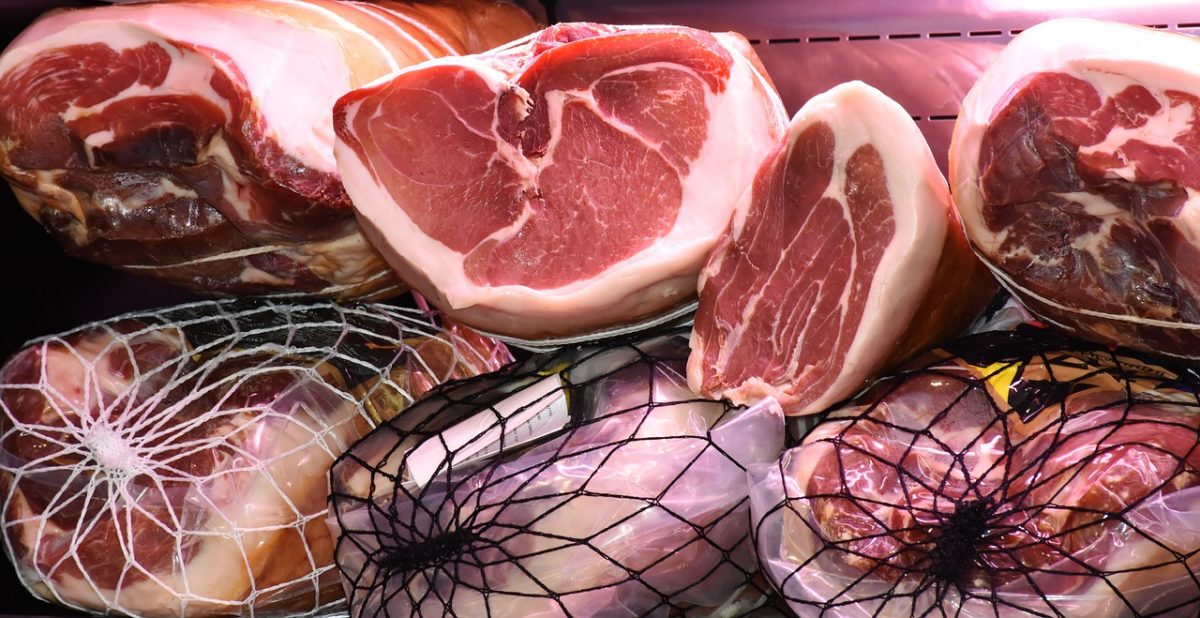

Since there are relatively lower calories in tofu than in meat, tofu is a healthier option for people who are trying to lose weight. Aside from low tofu calories, this soy-based product is also very filling and rich in protein. So, you can eat as much tofu as you want without feeling guilty.
3. Promotes Bone Health


The nutrition benefits of tofu don’t stop at keeping your heart healthy and your weight in check. When tofu is prepared, calcium is added to it before coagulation. This makes it a great source of calcium. Since calcium is essential in carrying out many bodily processes and keeping our bones healthy, you can consider tofu to be an important part of your meal plan.
Is Tempeh A Healthy Choice?
Tempeh is rich in vitamins and minerals that are essential in keeping your health in check. Just like tofu, this Indonesian food also boasts of its great health benefits.
1. Tempeh Can help reduce cholesterol


Acquiring high levels of cholesterol can be risky. Fortunately, tempeh can help decrease your cholesterol levels. Being a bit knowledgeable in tempeh nutrition facts will help you better understand why it’s so beneficial to people with high cholesterol levels. Remember that tempeh’s main ingredients are soybeans that contain isoflavones. These isoflavones are known for diminishing cholesterol levels in the body, which in turn make your body healthier.
2. Tempeh Can Combat Stress


By adding tempeh to your plant-based meal plan, you can have a healthier diet and even combat stress. This is because tempeh’s soy isoflavones help in eliminating oxidative stress. Isoflavones act as antioxidants that reduce the health-threatening free radicals in our bodies. Due to this, they cause stress levels and the possibility of chronic disease acquisition to lower.
How to Prepare Tofu and Tempeh: Recipes to Love
Many people have enjoyed tempeh and tofu protein for thousands of years. As nutritious meat alternatives, these soy products easily became the favorite food ingredients of many people. Just like them, you can enjoy tofu and tempeh right in the comfort of your home.
Here are some ways on how you can cook these healthy soy products.
1. Fried Tofu


Both kids and adults will surely love this recipe. Fried tofu can be served as-is or with side sauces of your choice. It can also be a tasty addition to other dishes such as salads or stir-fry meals. Whether you are vegetarian or not, you will surely not regret making this delicious crispy tofu recipe.
Ingredients:
- Extra-firm tofu
- 1 teaspoon of salt
- 2 cups of oil (preferably vegetable oil)
Instructions:
- First, chop your extra firm tofu into two inch-sized portions. If you prefer having smaller chunks, you may slice them some more.
- Then, sprinkle a quarter teaspoon of salt on top of the tofu chunks. Do the same step on other sides of the slices.
- Prepare a plate or bowl for serving. Place several layers of paper towels on it and set this aside for later.
- Heat a skillet pan or wok on your stove. Once hot, pour oil and wait for it to be ready.
- Carefully pour and cook the tofu chunks in hot oil.
- Keep frying your tofu chunks for four to five minutes, or until they are golden in color.
- Once done, drain the crispy tofu slices by placing them on the paper-lined dish that you prepared. Set your fried tofu aside and let it cool at room temperature.
2. Silken Tofu with Soy Sauce
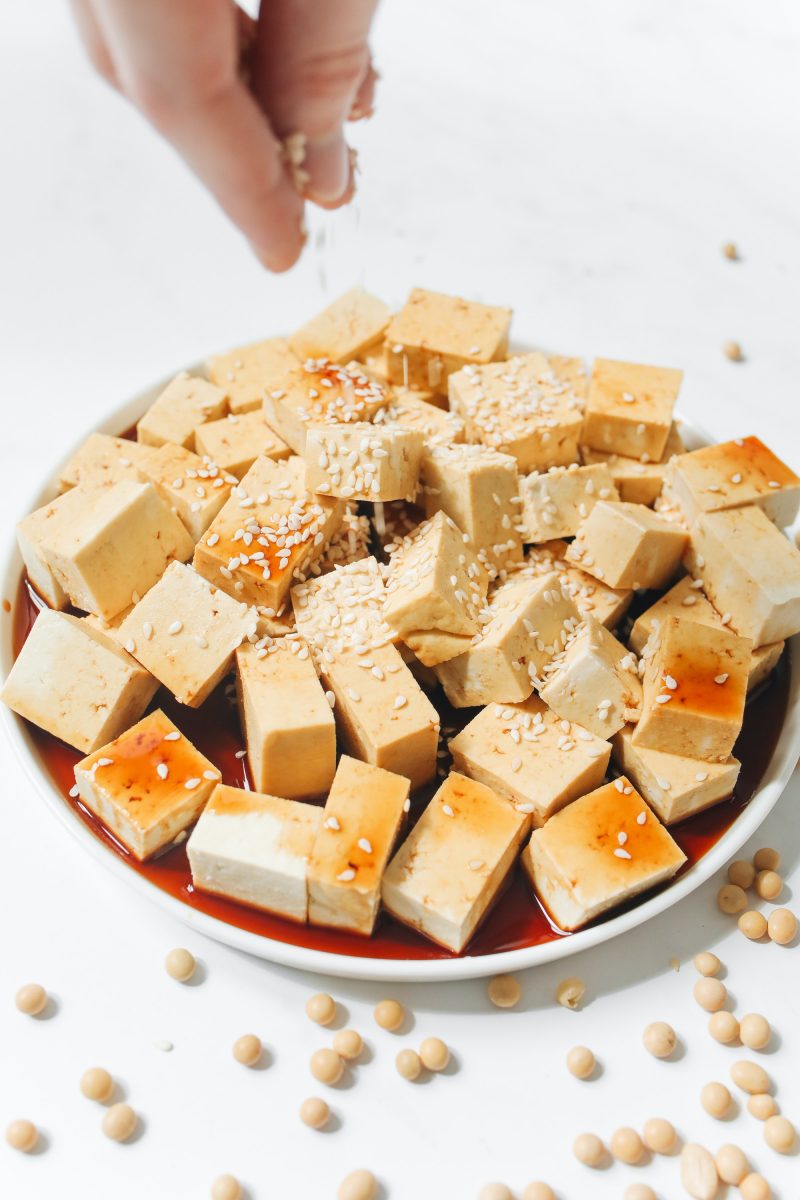

This recipe is another great example of learning how to cook tofu fast. You can have a taste of the food culture from tofu’s origin country by trying out this Chinese meal.
Ingredients:
- Silken tofu
- Light soy sauce
- 1/2 teaspoon of toasted sesame oil
- Optional: green onions (chopped) or sesame seeds
Instructions:
- Start by placing your silken tofu on a plate or bowl. Next, you must ensure that your tofu is not too wet. If you find that it is a little too damp, you can dry it up by using a paper towel.
- After ensuring that your tofu is dry enough, carefully start slicing it into one to two-inch cubes.
- Combine your toasted sesame oil and some light soy sauce in a separate dish bowl. When you have mixed enough proportions to fit your taste, pour the sauce on your pre-chopped silken tofu.
- Toss your chopped green onions and sesame seeds on top. Mix them with sauce and tofu.
- Serve and enjoy.
Tip: For added taste, we recommend adding the dish with some chili oil for a little kick of spice.
3. Tempeh Buffalo Wings


If you enjoyed the crispy tofu recipe, then you will surely love tempeh buffalo wings as well. This meal offers better nutritional values than meat ingredients while promising the same delectable taste.
Ingredients:
- Tempeh
- 1/4 teaspoon of salt
- 2 tablespoons of melted butter
- 2 cups of panko bread crumbs
- 1/4 teaspoon of paprika
- 1 tablespoon of chili powder
- 1/2 tablespoon of onion powder
- 1 tablespoon of garlic powder
- 1/3 cup of vinegar
- 1/2 teaspoon of maple syrup
- 2 teaspoons of coconut oil
- 1 tablespoon of cornstarch
Instructions:
- First, cut your tempeh into strips with a thickness of around half an inch.
- Prepare your buffalo sauce by mixing salt, paprika, onion powder, chili powder, garlic powder, cornstarch, vinegar, maple syrup, and coconut oil in a skillet or saucepan.
- Set your stove on medium-low heat. Next, mix your sauce carefully as it simmers.
- After cooking, remove the sauce from the heat. Next, add two tablespoons of melted butter in the mixture.
- Preheat your oven to 350°F. While doing so, start placing your panko bread crumbs on a slightly deep plate or a shallow dish bowl.
- Start prepping your tempeh strips by glazing them with your buffalo sauce.
- After coating, press your strips into your bread crumbs. Make sure to cover all sides.
- Place your strips into the oven and bake for ten to 15 minutes.
- Once the sides of your panko layers are crisp and brown, take out your tempeh strips and serve with your sauce of choice.
4. Veggie Tempeh Burger


This veggie tempeh burger recipe can be a great addition to your plant-based meal plan. Rich with both nutrients and flavor, this mouth-watering burger can easily be your favorite go-to meal every day.
Ingredients:
- Tempeh
- 1/2 tablespoon of olive oil
- 1/2 cup of yellow onion (chopped)
- 1 tablespoon of flaxseed (ground)
- 1/4 cup of carrots (grated or minced well)
- 1 tablespoon of vinegar
- 2 tablespoons of nutritional yeast or any substitute of your choice
- 1 tablespoon of coconut sugar
- 2 tablespoons of flour
- 1 teaspoon of garlic powder
- 1/2 teaspoon of paprika
Note: You can use any kind of buns, condiments, or toppings that you like.
Instructions:
- Start by slicing your tempeh. Next, put the tempeh on a steamer basket in a water-filled pot. For 8 to 10 minutes, steam the tempeh and remove from heat after.
- Set your stove to medium heat and drizzle olive oil into your pan. When the oil is ready, sauté your grated and chopped onions. Continue cooking for around four to six minutes or until onions are soft. After this, take the pan away from the heat.
- Place your steamed tempeh, along with your cooked carrots and onions into a food processor. Add in flour, nutritional yeast, garlic powder, chili powder, coconut sugar, paprika, ground flaxseed, and vinegar.
- Afterwards, you can mix the ingredients in a processor until they are minced well. Make sure not to over-do it so you can have a more meat-like texture to your tempeh patty.
- Put the mixture into a different container. For around two hours, let the tempeh mixture chill in your fridge.
- Take out the tempeh mixture and start shaping it into patty portions.
- You can now fry, bake, or grill your tempeh patty. After cooking, serve on a bun and add on toppings and sauces of your choice.
The Bottom Line
Whether you are a vegetarian or not, the appreciation for tofu and tempeh can’t be overlooked. Their versatility and health benefits truly make them stand out from other meat alternatives. We hope that this guide on tofu and tempeh nutrition facts helped you understand more about these soy-based products. So, the next time you crave a greasy beef burger, do consider opting for a healthy soy burger instead.

